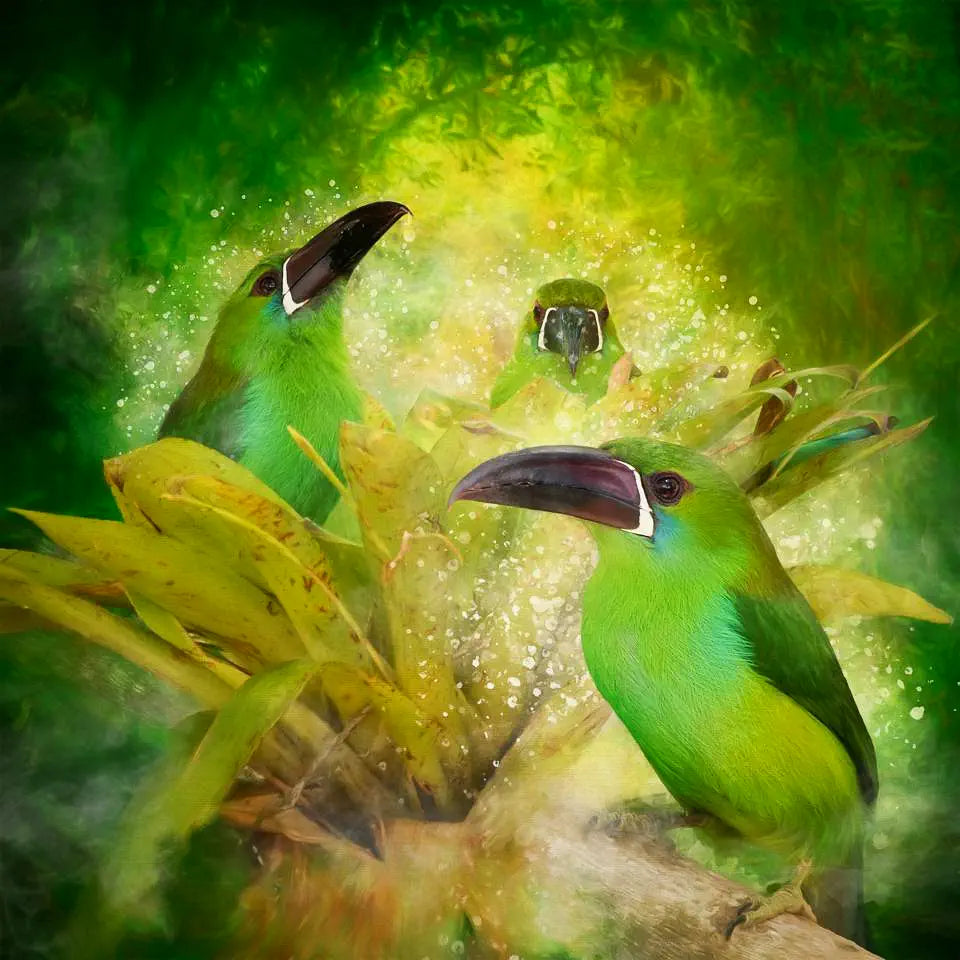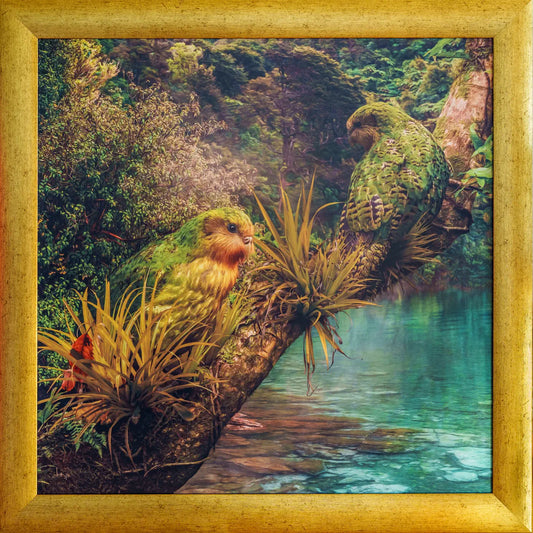
Birding heaven in the Bella Vista Cloud Forest, Ecuador - travelling through the archives
Share
Featured image "Bathtime in Bella Vista (crimson-rumped toucanet)" - fine-art prints available on request.
After 11 days in the Galápagos [see previous story], we arrived back in Quito to head to a very different sort of paradise - the Bella Vista Cloud Forest. This high-altitude region of Ecuador is considered one of the best birding spots in the world. And conveniently, with travel to the Galápagos leaving from Quito it's easy to tack on a side trip.
This region was in danger of having forest converted into farms, but may farmers have now found there is more money to be had from tourism. Although tourism has huge environmental impacts, in this case, it is also having a positive effect of saving this precious and unique ecosystem.
The biggest attraction is of course the hummingbirds! Such an incredible variety from tiny booted rackettails with their little ugg boots to the brilliants with their iridescent colours. And despite being tiny, each had huge ferocious attitude! As we climbed in altitude, the species of hummingbirds changed, each evolved and adapted to that specific height. They were also quite tricky to photograph in the dappled forest, as they zipped around from flower to flower, stretching my novice photography skills.

Booted rackettail, Bellavista Cloud Forest Reserve - not the greatest of photos but look at those fluffy legwarmers!!!
-
Green-crowned woodnymph, Milpe Reserve
-
Green-crowned brilliant, Milpe Reserve
-
Great sapphirewing, Yanacocha Reserve
-
Buff-winged starfrontlet, Yanachocha Reserve
-
Ridiculously proportioned sword-billed hummingbird, Yanacocha Reserve
-
Tyrion metaltail, Bella Vista Cloud Forest Reserve
The area is also famous for birds from the toucan family, including the giant bumble-bee tummied pale-mandibled araçari and paint-box coloured plate-billed mountain toucan. My favourite bird from the entire trip though was the diminutive crimson-rumped toucanet who we found bathing in a bromeliad (see photo-art at top of this story). It is so fascinating to see these improbably birds eat as they have to toss the food up with their giant bills and hopefully catch it in the back of their throats.
We're not twitchers but we did keep count of the number of species we saw in the four days we spent exploring - an incredible 127 (confirmed by our knowledgeable guide)! I much prefer spending extended time with just one species, getting to know them intimately, but on a whistle-stop trip like this, it's just not possible. And we weren't even trying to knock off as many as possible, it's just that there are that many different birds to see! It's really quite overwhelming, which is why here I decided to post about just the hummingbirds and toucans.
A P.S. about intrepid travelling
Like I did for the Galápagos leg of the trip, I'd like to add some notes about travelling with a chronic illness. I was very anxious before the trip about the effects of altitude and potential altitude sickness. Alongside anxiety about seasickness, I'm surprised Lynn ever convinced me to go! So before the trip, we went through two rounds of "altitude training". This involves breathing a high-nitrogen mix of air through a mask for about an hour a day for three weeks. You can hire a system to do at home or there is a clinic downtown. Breathing this mix helps create new red blood cells which can then carry more oxygen and give a bit more energy. The effects last around 3 weeks or so. Other than huffing and puffing a bit more and having some trouble sleeping, we didn't have any altitude-related issues, so I'm glad we went to the effort.
What I did notice though was "land sickness". For about a week after getting off the boat after 11 days at sea, I felt the world moving as if I was still onboard. It was quite unexpected, but apparently it is a thing, and sometimes people never recover. Fortunately it wore off!
I was shooting with the Panasonic GX7 and 20mm, 100-300mm, and 35-100mm lenses, all bought especially for this trip and I loved how lightweight it all was. I was still learning how to use the gear, so a lot of the photos are sub-par. I'd love to return with my latest kit and better knowledge of how to get the best out of shooting in dappled forests (even with good gear, it's hard).
Do you have a bucket-list birding destination for when we can travel again?
What I did notice though was "land sickness". For about a week after getting off the boat after 11 days at sea, I felt the world moving as if I was still onboard. It was quite unexpected, but apparently it is a thing, and sometimes people never recover. Fortunately it wore off!
I was shooting with the Panasonic GX7 and 20mm, 100-300mm, and 35-100mm lenses, all bought especially for this trip and I loved how lightweight it all was. I was still learning how to use the gear, so a lot of the photos are sub-par. I'd love to return with my latest kit and better knowledge of how to get the best out of shooting in dappled forests (even with good gear, it's hard).
Do you have a bucket-list birding destination for when we can travel again?

















1 comment